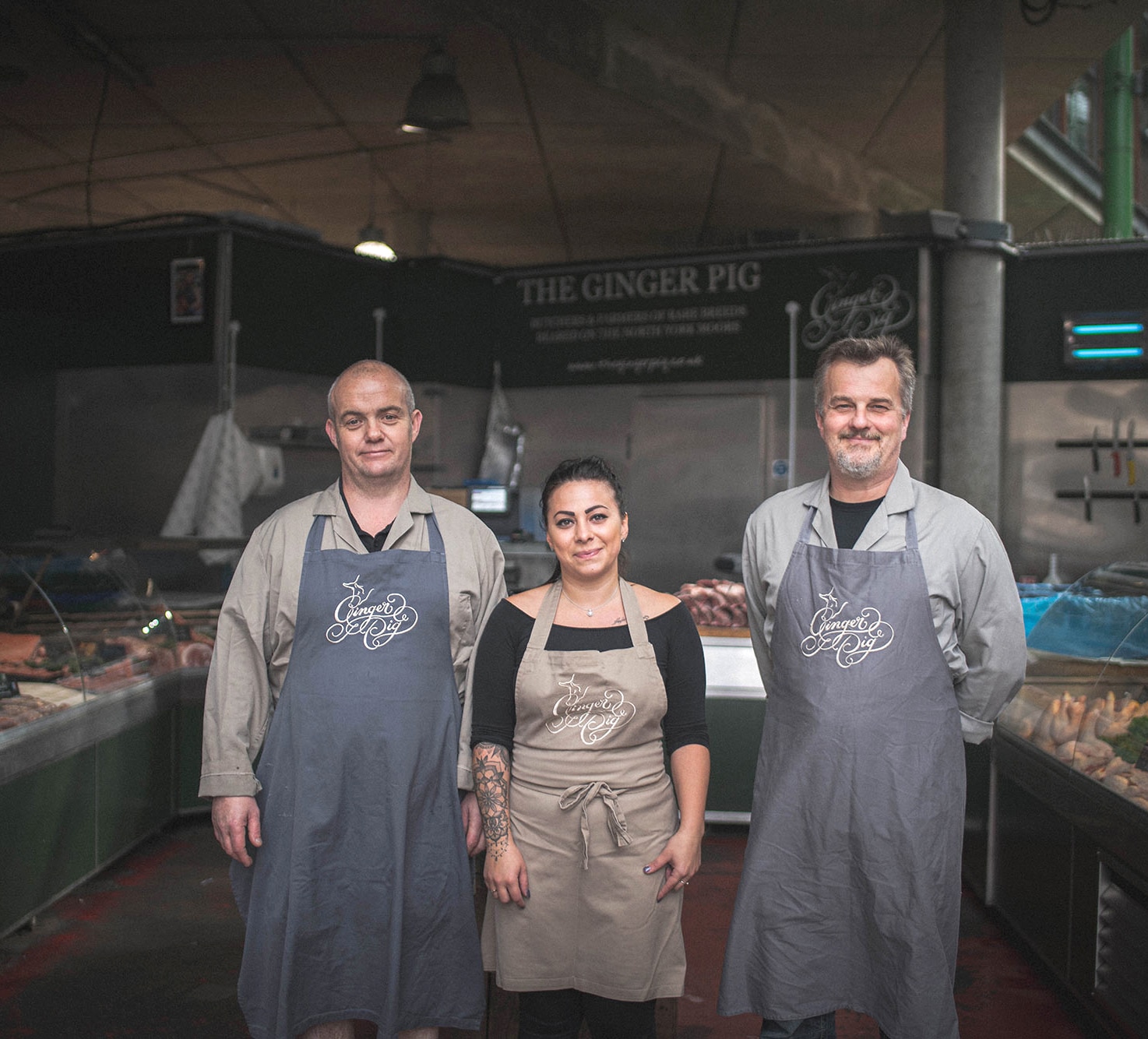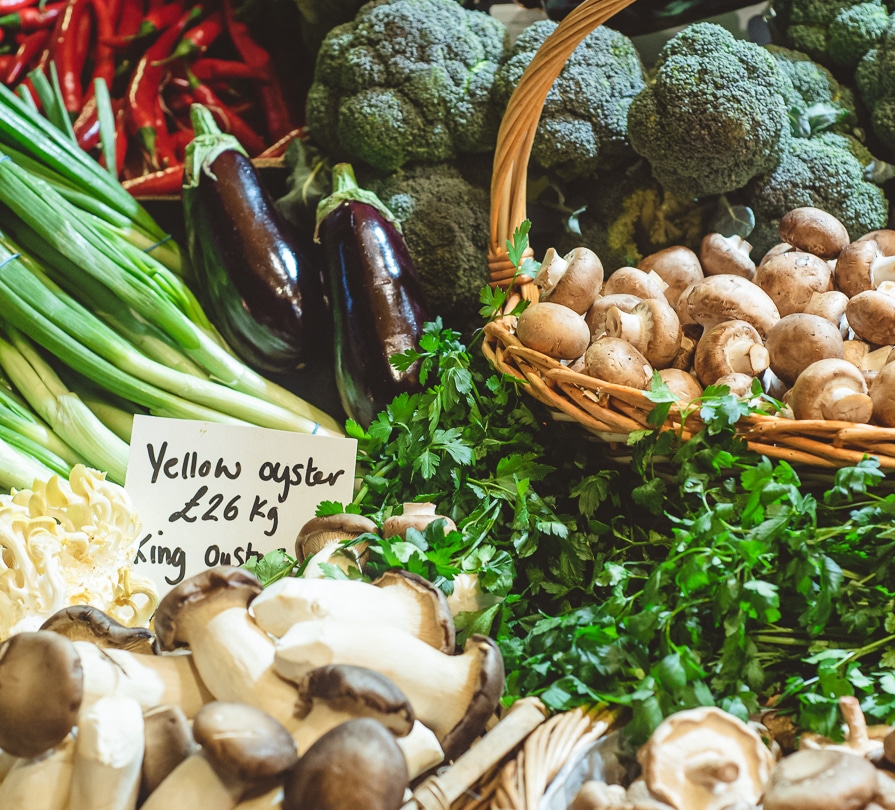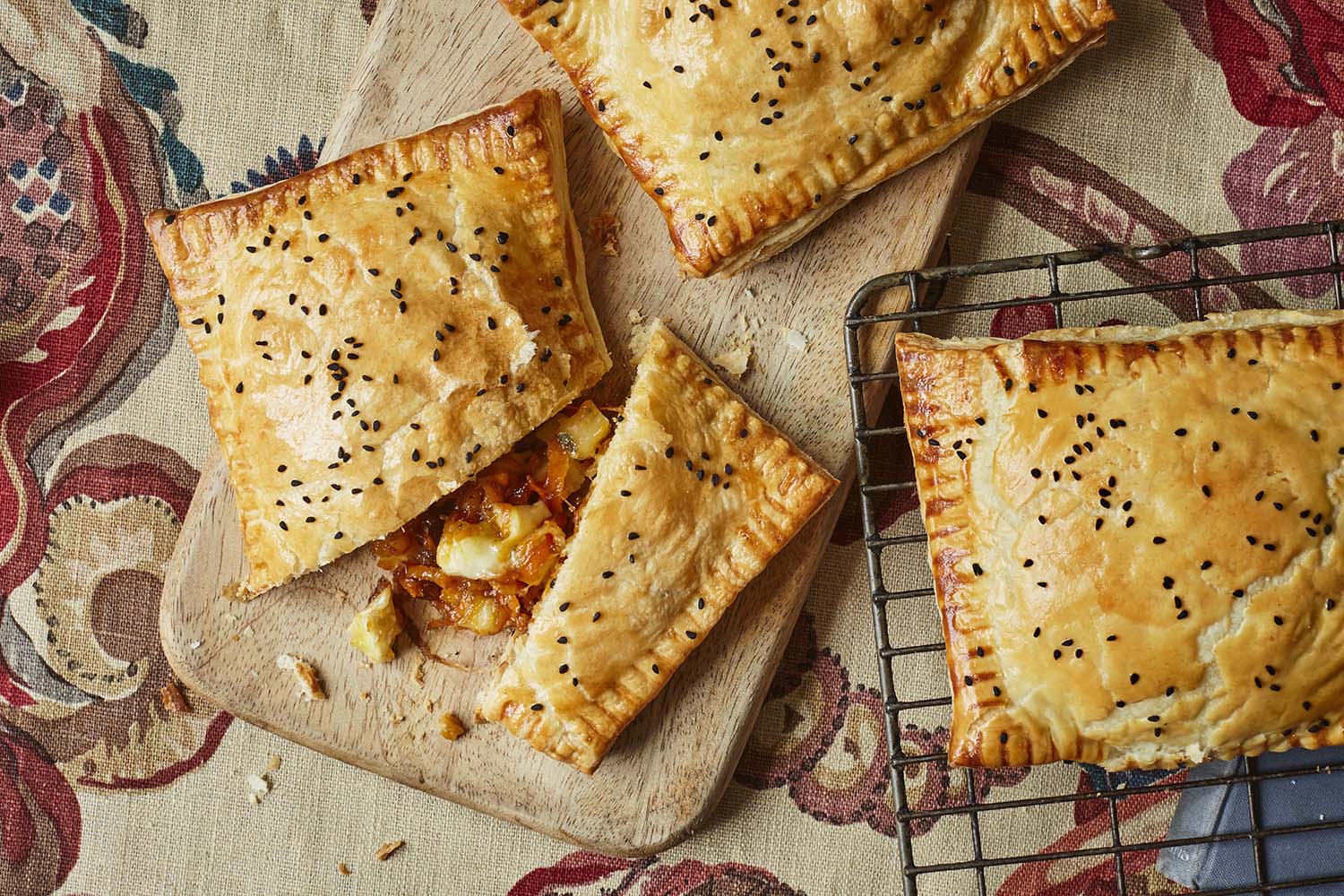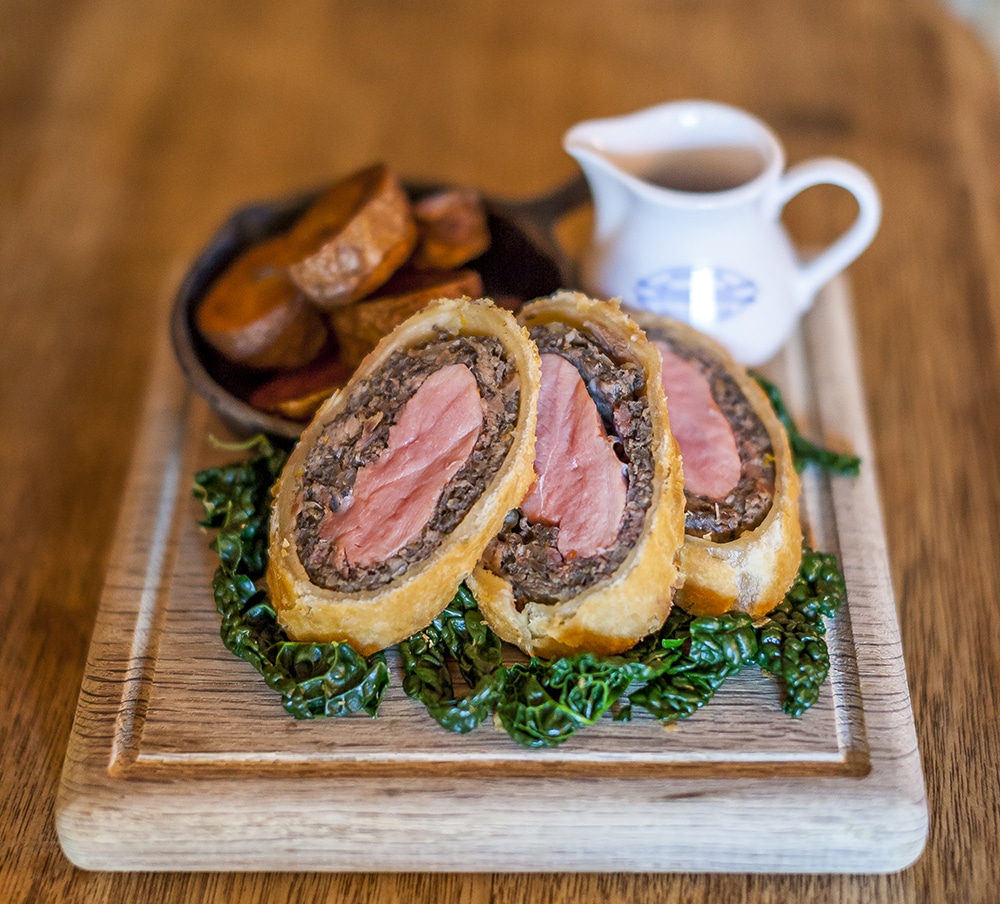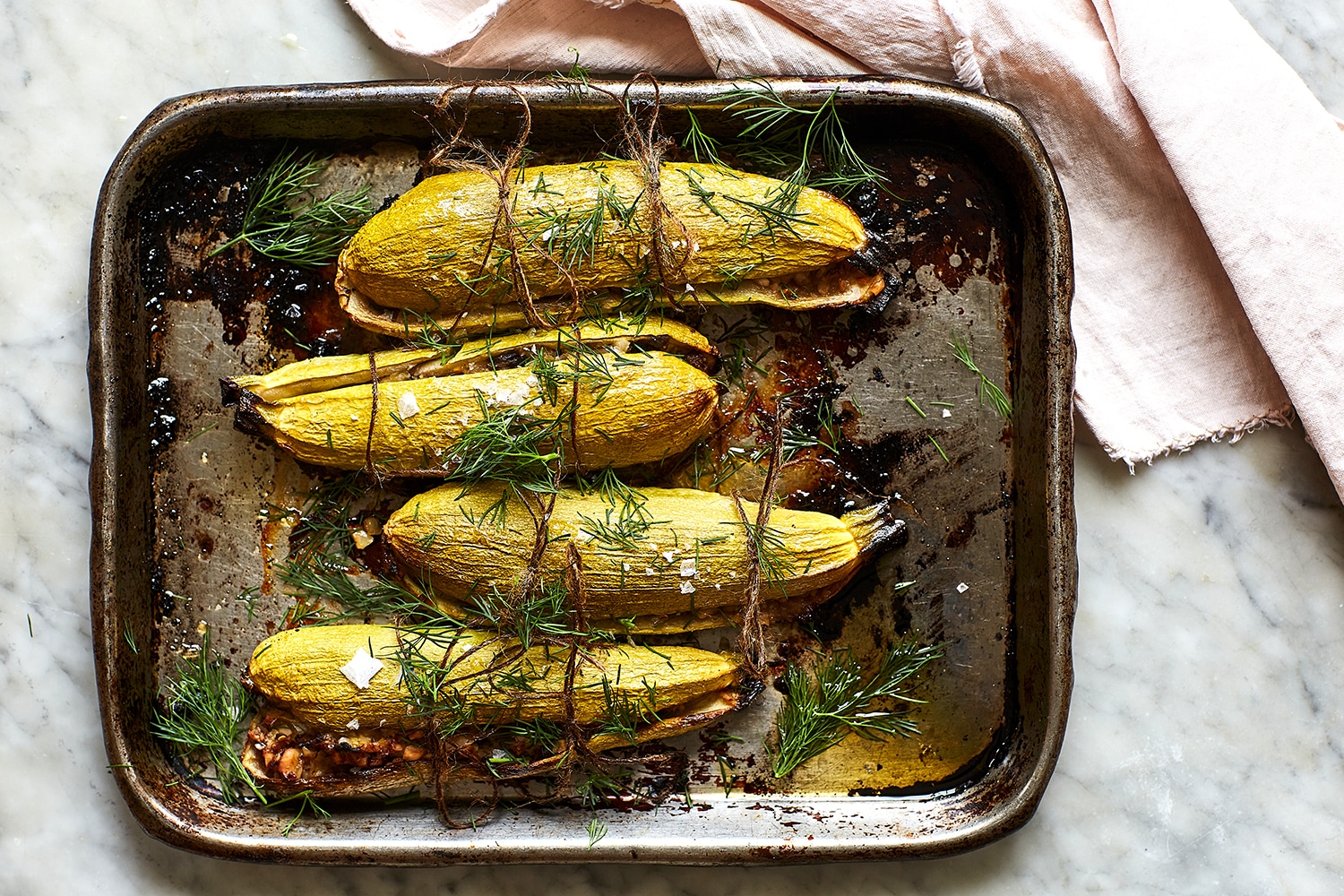Festive roast porchetta
A magnificent stuffed pork loin for Christmas Day, from the Ginger Pig Christmas Cook Book
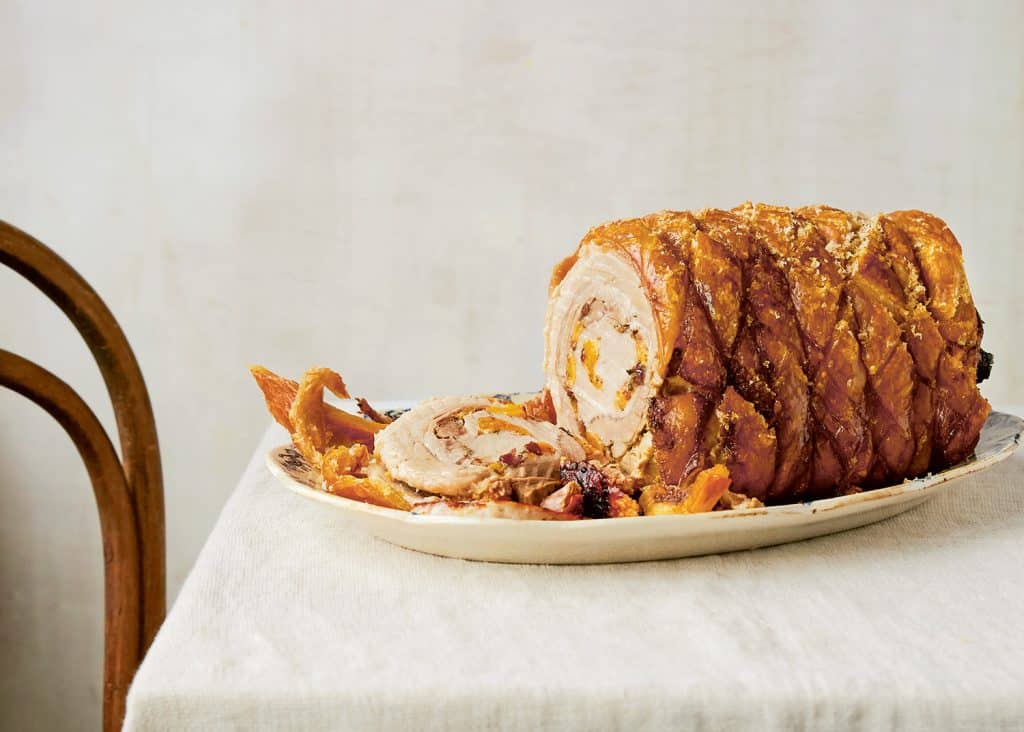

Recipe Meta
Prep
20 mins
Cook
Up to 5 hours, plus 30 mins resting
Serves
8-10
Difficulty
Medium
Ingredients
- 1 porchetta, prepared by your butcher and with the skin scored, weighing about 4kg
- A knob of butter
- 5 shallots, finely diced
- 150g soft dried apricots, finely chopped
- 125g dried cranberries, chopped
- Juice of ½ lemon
- Zest and juice of ½ orange
- A generous handful of sage leaves, finely chopped
- A generous handful of parsley leaves, finely chopped
- 125g panko breadcrumbs
- ½ tsp fine salt
- ½ tsp freshly ground black pepper
- 1 tbsp flaky sea salt
Method
Remove the porchetta from the refrigerator at least an hour before you start cooking. Unroll it and pat the skin dry with kitchen paper.
When ready to cook, preheat the oven to 220C – it needs plenty of time to get really hot, or the skin won’t crackle. Place a small frying pan over a medium heat. Add the butter and then the shallots and fry gently, stirring often, until translucent. Place the cooked shallots in a large bowl and add all the other ingredients, except the flaky sea salt. Mix well.
Cut five lengths of butcher’s string (or cotton string), each long enough to wrap around the rolled porchetta and tie. Lie four of them vertically and parallel to each other on a clean work surface, close enough to each other that they will wrap around the rolled meat, and one along the middle of the others, at 90 degrees.
Pat the skin dry again. Place the meat, skin side down, over the strings so that one short side is facing you and the long sides are parallel to the four pieces of string. Season the meat generously, then arrange the stuffing on top. It will be very crumbly and a bit messy; don’t worry.
Roll up the meat. If your butcher has cut the skin so that one end forms a flap, make sure that when you roll it, the flap covers the loose meat at the other end, and forms a neat join with the skin there. Don’t overlap the two layers of skin, or the skin will become tough during cooking. Use the strings to tie the rolled meat tightly. (You may need another pair of hands for this bit.) If lots of stuffing has fallen out, push it back into the rolled porchetta.
Line a roasting tin (deep as a lot of fat will render off) with baking paper. Transfer the rolled pork to the tin. Rub the flaky sea salt into the skin, working into the score marks. Place the porchetta into the very hot oven and roast for 30 mins. Then turn down the heat to 170C and cook for a further 3. hours. (Use a meat thermometer to check the centre of the roast is around 65C at this point.) If the skin hasn’t turned to crackling by this time, crank the heat back up to 220C and cook it for a further 10-30 mins, checking every 5 mins that the skin isn’t burning. If it still doesn’t crackle, you can remove the meat from the oven, cut off the string, slice off the skin and put the skin back into the oven on its own for a few minutes.
Rest the meat for about 30 mins before serving. Because some of the stuffing will inevitably have fallen into the pan, along with a lot of fat, the pan juices are not ideal for making a gravy (which is not traditionally served with porchetta, anyway). However, the rich, juicy meat is delicious with tart-and-sweet redcurrant jelly or cranberry sauce.
Image: Sam Harris
Recipe from Ginger Pig Christmas Cook Book by Rebecca Seal & Tim Wilson (Mitchell Beazley)
